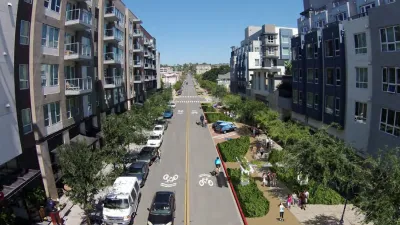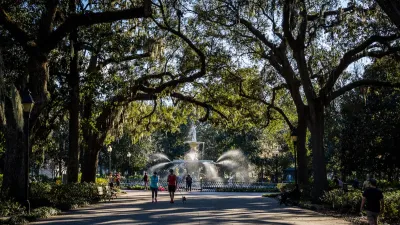In response to the growing demand for urban greenspace, cities around the nation on working on plans for large new parks -- rivaling the urban park boom during the 19th or early 20th century.
"The housing market is tanking, but one kind of real estate is gaining value in major U.S. cities: parkland.
After years of infighting over what to do with the few remaining areas of open space in metropolitan areas, several communities are creating huge urban parks - several times the size of New York's 843-acre Central Park.
"We grew so rapidly in the '80s and '90s in the rate we were consuming land, people did become alarmed," says David Goldberg, spokesman for Smart Growth America, a national coalition promoting green space. "This desire for parkland and capitalizing on natural assets is really taking hold."
It is spurred by several factors, including mounting environmental concerns, improved property values for park-side real estate, increased demand for green space from health-conscious people moving back to cities and a greater availability of vacant industrial land.
The parks development comes despite troubled public finances in many metro areas because of the housing and credit crunch."
FULL STORY: Push for urban parkland takes root

Study: Maui’s Plan to Convert Vacation Rentals to Long-Term Housing Could Cause Nearly $1 Billion Economic Loss
The plan would reduce visitor accommodation by 25,% resulting in 1,900 jobs lost.

North Texas Transit Leaders Tout Benefits of TOD for Growing Region
At a summit focused on transit-oriented development, policymakers discussed how North Texas’ expanded light rail system can serve as a tool for economic growth.

Why Should We Subsidize Public Transportation?
Many public transit agencies face financial stress due to rising costs, declining fare revenue, and declining subsidies. Transit advocates must provide a strong business case for increasing public transit funding.

How to Make US Trains Faster
Changes to boarding platforms and a switch to electric trains could improve U.S. passenger rail service without the added cost of high-speed rail.

Columbia’s Revitalized ‘Loop’ Is a Hub for Local Entrepreneurs
A focus on small businesses is helping a commercial corridor in Columbia, Missouri thrive.

Invasive Insect Threatens Minnesota’s Ash Forests
The Emerald Ash Borer is a rapidly spreading invasive pest threatening Minnesota’s ash trees, and homeowners are encouraged to plant diverse replacement species, avoid moving ash firewood, and monitor for signs of infestation.
Urban Design for Planners 1: Software Tools
This six-course series explores essential urban design concepts using open source software and equips planners with the tools they need to participate fully in the urban design process.
Planning for Universal Design
Learn the tools for implementing Universal Design in planning regulations.
City of Santa Clarita
Ascent Environmental
Institute for Housing and Urban Development Studies (IHS)
City of Grandview
Harvard GSD Executive Education
Toledo-Lucas County Plan Commissions
Salt Lake City
NYU Wagner Graduate School of Public Service





























